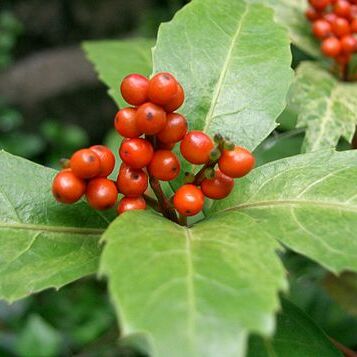Subshrubs glabrous; wood without vessels. Leaves opposite, usually in many pairs; stipules small; petioles short, connate at base, forming a short sheath; leaf blade elliptic, ovate-elliptic, or elliptic-lanceolate, margin serrate, with 1 gland at serrate tip. Spikes terminal, usually branched, ± in panicles; flowers bisexual, perianth and pedicel absent; bract 1, triangular, persistent. Stamen 1, fleshy, baculate to depressed; anther 2(or 3)-loculed, thecae lateral to introrse. Ovary globose or ovoid; style absent; stigma subcapitate or minutely spotted. Drupes globose or ovoid.

